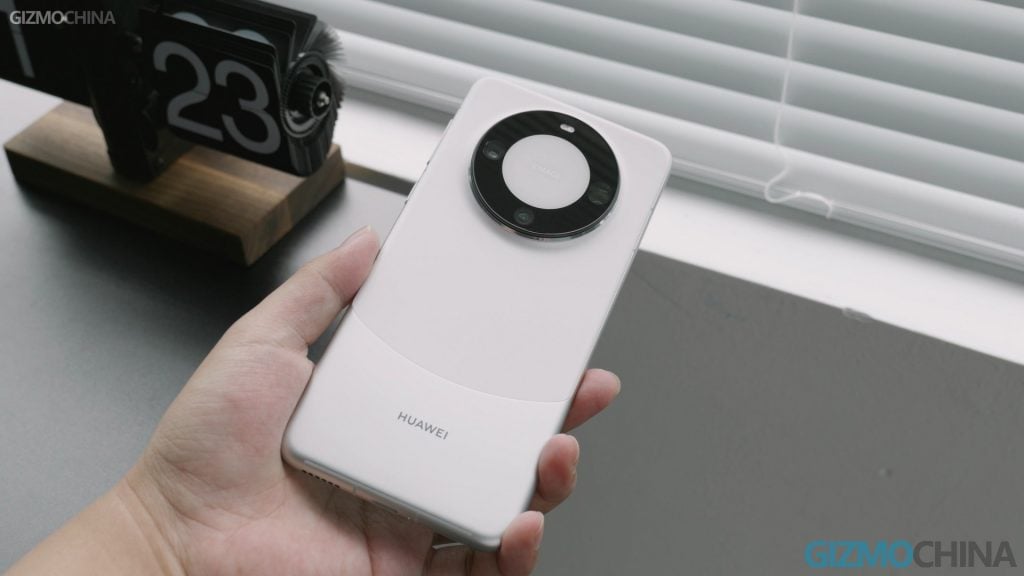On August 29th, Huawei, seemingly out of nowhere, announced the Mate 60 Pro. The company did not hold any sort of launch event.
The device was simply listed on its official website and first-party online store, VMall. This is unlike Huawei, as the telecom giant is known for extravagant events, especially for its premium products.
It was even more shocking to learn that the device supports 5G connectivity. However, the company makes no mention of 5G support and the name of the chipset found inside the phone.
It has been a week since the phone became official, and Huawei has already sold over a million units of the Mate 60 Pro. The smartphone is expected to ship at least 12 million units.
Multiple videos and articles (including ours) regarding the product have emerged on the internet over the last few days. Based on the information available, we have compiled a single article that answers the key questions about the chip powering the Huawei Mate 60 Pro.

Which chip powers the Huawei Mate 60 Pro?
The Huawei Mate 60 Pro houses a HiSilicon Kirin 9000s chip. It is Huawei’s first new mobile chipset in three years.
Most importantly, the SoC enables 5G connectivity. Thus, the Mate 60 Pro is also the first Huawei 5G phone in a long time since the limited-run Mate 40 series from late 2020.
Who manufactures the Huawei Mate 60 Pro’s HiSilicon Kirin 9000s chip?
Historically, TSMC manufactured HiSilicon chipsets for Huawei. However, due to US sanctions, the telecom giant could not continue its business with the world’s most advanced chip manufacturer.
As a result, China’s SMIC produces the new Kirin 9000s SoC. As per findings by TechInsights, the chipset is fabricated on SMIC’s 7nm (N+2) process.
The Kirin 9000s measures 107 mm², which makes it 2% larger than the 5nm-based TSMC-manufactured Kirin 9000 chip (105 mm²). Interestingly, the latest chipset even has larger critical dimensions (CDs) than its predecessor, despite being based on a less advanced fabrication process.
This is a significant accomplishment for a Chinese chip manufacturer. But for some reason, SMIC has not published papers on its latest innovation in the public space.
What is the architecture of the Huawei Mate 60 Pro’s HiSilicon Kirin 9000s chip?
Like every other mobile chip on the market, the HiSilicon Kirin 9000s is ARM-based. But instead of completely relying on the off-the-shelf default ARM cores, Huawei has opted for custom cores like Samsung’s Mongoose.
The Kirin 9000s features an octa-core CPU. Some benchmarks by users / reviews revealed 12 cores since the CPU supports hyper-threading (up to 12 threads). This makes the Kirin 9000s the first ARM chip on the market to support CPU hyper-threading.
Out of the eight CPU cores, the prime core is the custom Taishan core, clocked at 2.62 GHz. Further, the median cores are again a cluster of three custom Taishan cores clocked at 2.15 GHz. Finally, the efficiency cores are a cluster of four stock ARM Cortex-A510 cores.
The graphics are handled by the Maliang 910 GPU, clocked at 750 MHz. The SoC also comprises newer versions of the DaVinci NPU, ISP, and Baron modem.
How powerful is the Huawei Mate 60 Pro’s HiSilicon Kirin 9000s chip?
Based on benchmark tests (AnTuTu and Geekbench), the HiSilicon Kirin 9000s chipset falls behind the current-gen Android champion, the Qualcomm Snapdragon 8 Gen 2.
The SoC is capable of scoring around 7,00,000 points on AnTuTu. Whereas on Geekbench, it can attain about 1,300 and 3,300 points in single-core and multi-core tests, respectively.
These scores put the performance of Kirin 9000s in the ballpark of the Snapdragon 888. In other words, the chip is two generations behind in the Android space.
Does the Huawei Mate 60 Pro’s HiSilicon Kirin 9000s chip support 5G?
As mentioned at the beginning, the Huawei Mate 60 Pro is the first Huawei 5G smartphone in nearly three years. HiSilicom Kirin 9000s’ newly developed Baron modem enables support for fifth-generation mobile communication technology on the phone.
Unfortunately, not much is known about this mysterious modem. Anyway, in addition to 5G, the device also supports satellite connectivity.
In fact, the Huawei Mate 60 Pro is the world’s first commercial smartphone to support satellite calling. The Mate 50 Pro was limited to texts, like the iPhone 14 lineup.
RELATED:
- Huawei Mate 60 Pro Teardown: Luxurious Internals, Kirin 9000S Chip, Liquid Cooling, Stunning Camera and More
- Behind Closed Doors: Huawei’s Secretive Approach to Its Mate 60 Pro Chip
- Huawei Mate 60 apparently gets same Kirin 9000s chip as Mate 60 Pro
- Former Huawei Exec: HarmonyOS to arrive on PC next year
- Premium Huawei tablet with Kirin 9 series chip in the works







